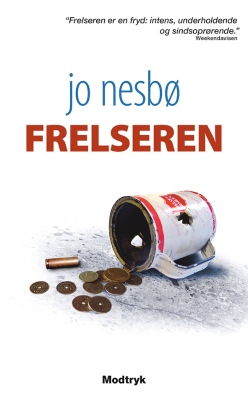
Notes from the CIO
Podcast af Mark Mowrey, CFA
SRCM's Chief Investment Officer, Mark Mowrey, provides additional perspective on this month's commentary. Importantly, this commentary is not presented as an investment recommendation. The approach described may not be right for everyone. No one watching or listening to this commentary should take our comments as advice specific to or appropriate for their individual situation. Individual circumstances should be taken into consideration when determining a suitable investment approach. All investing carries risk.
Begrænset tilbud
3 måneder kun 9,00 kr.
Derefter 99,00 kr. / månedIngen binding.
Alle episoder
25 episoderIn this podcast, I lament the quick-draw narratives that seem to drive short-term market volatility.
This session, I ponder the motivations of and position our work against the "do this now!" punditry.
In this podcast, I provide some early glimpses of the power of artificial intelligence in practice. I also discuss some concerns I have for the technologies' broader usage in investment management and allow Microsoft's CoPilot to chime in.
Cash holdings may provide comfort, but inflation diminishes the value of uninvested cash over time. Outside of purchase delays and product substitutes, there is little more consumers can do to directly address inflation. Investors, on the other hand, have a range of options to address that potential drag. The greater the expected return of a portfolio, the potential greater success one may find in achieving financial goals, which may specifically include seeking to beat inflation. The constant caveat applies: the more return we seek the greater the risk we might not achieve that expected return: * Short-term Treasury securities may offer a reasonable alternative to plain old cash. But generally relatively low expected returns may mean they at times do not keep up with inflation * Stocks historically have provided among the strongest total returns across all asset classes, normally offering a substantial cushion against inflation. But stocks are volatile, and may see losses even over long periods * With bond yields now at multi-decade highs, investors need not see relative safety as a zero-gain alternative to risky stocks. Still, with time, stocks may provide relative returns commensurate to their incremental risk 202309 SRCM Commentary [https://srcmadvisors.com/wp-content/uploads/2023/08/202309-SRCM-Commentary.pdf]Download [https://srcmadvisors.com/wp-content/uploads/2023/08/202309-SRCM-Commentary.pdf] LISTEN TO THIS MONTH'S NOTES FROM THE CIO PODCAST: INFLATION: RISK OF DOING NOTHING Fair to suggest that a minimal expectation for any investment strategy is to maintain purchasing power over time, implying returns in excess of inflation (a positive “real” return). While that goal might seem straightforward enough, achieving it isn’t always so simple. To wit: for the better part of the last 15 years, U.S. inflation, as measured by the year-over-year change in the Consumer Price Index, ran hotter than the yield one could earn buying 1-month U.S. Treasury bills. With short-term bond yields now comfortably above latest U.S. inflation figures (consumer prices roses 3.2% year-over-year in July, versus a 1-month Treasury Bill yield of 5.3% at the end of June), investors can take on very little risk while seeking to ensure their savings maintain purchasing power. That short-term Treasury yields are higher than concurrent inflation marks a return to a relatively more normal situation: As we show in Figure 1, 1-month Treasury returns were above inflation just under three-fifths (57.8%) of the time since 1949. [https://srcmadvisors.com/wp-content/uploads/2023/08/sp_cash_v_infladj-1024x670.png] INVESTING: RISK OF DOING SOMETHING Over longer periods of time, the rate of success improves. While a “most, but not all the time” success rate might fail to inspire confidence, one must remember that T-bill investors are assuming very little risk. There are various ways to address inflation more directly in portfolios, including the purchase of inflation-protected securities and inflation-targeting hedges. But such strategies may come with their own unique set of considerations and risks and may at best only directly offset inflation, rather than provide meaningful “real” gains. As is generally the case when one seeks higher returns, “beating” inflation likely requires that investors assume greater risk. Equity investments may offer among the more straightforward options available to outgrow inflation. Looking back to Figure 1, while stocks achieve about the same rate of success over 1-month periods providing a return in excess of inflation as 1-month Treasury bills, the success rate for stocks improves more quickly and more substantially over time. In fact, over all historical 20-year periods and longer (using monthly returns), stocks historically have always outpaced inflation. As we noted, however, the increasing historical success at beating inflation can be seen as compensation for having taken on the extra risk of not only not beating inflation, but even substantially underperforming inflation over shorter periods of time. Reflecting this view, Figure 2 shows the range of historical inflation-adjusted outcomes (we calculated the “batting average” in Figure 1 from the same set of data we summarized in Figure 2). For stocks, while the batting average might be better, the range of outcomes is much wider than that for 1-month T-bills. And that wider range has included substantially more negative outcomes than 1-month T-bills over shorter time frames. Neither short-term Treasuries, nor stocks therefore guarantee a better-than-inflation outcome. Nonetheless, over shorter time frames, though Treasuries may have shown a weaker average chance of beating inflation, they’ve tended to have shown a far greater likelihood to have offered returns that have approximated inflation. Those results may still compare favorably to stocks, which have proved far more likely to disappoint—sometimes intensely so—over shorter time frames. [https://srcmadvisors.com/wp-content/uploads/2023/08/sp_v_cash_real-1024x670.png] WHEN’S BEEN THE MISMATCH? Regarding “when” T-bills have tended to underperform inflation, we have seen two general scenarios over the past century. The first, perhaps more obvious reason relates to occasions when inflation surprised to the upside. As we show in Figure 3, the late 1970s saw 1-month rates of inflation often exceed the concurrent levels of 1-month Treasury bills. That mismatch led to a long period of trailing 10-year returns that underperformed inflation. Only after the much higher interest rates of the very late 1970s and early 1980s were in effect did short-term Treasuries begin to provide inflation-beating trailing returns. A surge in inflation over the last two years led to a similar drop into negative territory for real returns for 1-month T-bills. But that mismatch came on the heels of nearly two decades during which time short-term interest rates were generally below monthly rates of inflation. As the Federal Reserve held the federal funds rate (its short-term target for overnight inter-bank lending) near 0% on account of desires to stimulate macroeconomic activity and to avoid a potential deflationary environment, 1-month T-bills followed suit. But inflation generally hovered near the Fed’s long-term target of 2% nonetheless, the result being a repression of real returns for short-term Treasuries. The longer-term Fed-forced mismatch, followed by the recent spike in inflation proved a double whammy for trailing real returns. A comparable inflation surge on the heels of World War II dragged down relative returns even 10 years later. After inflation subsided, however, relative returns were set up to outperform over the subsequent years. We tend to think we have entered a similar environment. With short-term rates in excess of inflation, so long as inflation continues to cool, real returns should remain reasonably positive. Readers will want to note the “so long as” and “should” qualifiers in that sentiment. Naturally, going-forward relative returns will be entirely dependent on the realized returns of the various asset classes in consideration, versus each other and inflation. Deciding where to position portfolios in light of client comfort with those unknowable factors and the relative volatility across the range of asset classes suitable to individual client investment scenarios remains core to our work as financial advisors and portfolio managers. [https://srcmadvisors.com/wp-content/uploads/2023/08/tbill1mo_v_infl_10yr-1024x670.png] IMPORTANT INFORMATION Signature Resources Capital Management, LLC (SRCM) is a Registered Investment Advisor. Registration of an investment adviser does not imply any specific level of skill or training. The information contained herein has been prepared solely for informational purposes. It is not intended as and should not be used to provide investment advice and is not an offer to buy or sell any security or to participate in any trading strategy. Any decision to utilize the services described herein should be made after reviewing such definitive investment management agreement and SRCM’s Form ADV Part 2A and 2Bs and conducting such due diligence as the client deems necessary and consulting the client’s own legal, accounting and tax advisors in order to make an independent determination of the suitability and consequences of SRCM services. Any portfolio with SRCM involves significant risk, including a complete loss of capital. The applicable definitive investment management agreement and Form ADV Part 2 contains a more thorough discussion of risk and conflict, which should be carefully reviewed prior to making any investment decision. All data presented herein is unaudited, subject to revision by SRCM, and is provided solely as a guide to current expectations. The S&P 500 Index measures the performance of the large-cap segment of the U.S. equity market. The opinions expressed herein are those of SRCM as of the date of writing and are subject to change. The material is based on SRCM proprietary research and analysis of global markets and investing. The information and/or analysis contained in this material have been compiled, or arrived at, from sources believed to be reliable; however, SRCM does not make any representation as to their accuracy or completeness and does not accept liability for any loss arising from the use hereof. Some internally generated information may be considered theoretical in nature and is subject to inherent limitations associated thereby. Any market exposures referenced may or may not be represented in portfolios of clients of SRCM or its affiliates, and do not represent all securities purchased, sold or recommended for client accounts. The reader should not assume that any investments in market exposures identified or described were or will be profitable. The information in this material may contain projections or other forward-looking statements regarding future events, targets or expectations, and are current as of the date indicated. There is no assurance that such events or targets will be achieved. Thus, potential outcomes may be significantly different. This material is not intended as and should not be used to provide investment advice and is not an offer to sell a security or a solicitation or an offer, or a recommendation, to buy a security. Investors should consult with an advisor to determine the appropriate investment vehicle.
So long as one did not carry too substantial an amount of interest rate risk in portfolios, markets provided a solid foundation for generally positive returns over the past quarter and year. While fixed income returns have yet to register the now higher yields on offer (recall that yields up = price down in bonds), global stocks took off from the October bottom. “Despite all that” is a common refrain when discussing stock performance over the past year. Though they fell behind in May, developed-market stocks nearly matched the performance of U.S. stocks. Emerging-market equities languished over the trailing twelve months. In the States, Large-Cap Growth stocks once again took the lead last quarter, adding to substantially stronger gains for the prior year, during which time Growth generally outperformed Value across all sizes of stocks. Meantime, Value turned in a better quarter abroad, while coming in close to Growth over the prior twelve months. Turning to fixed income, rates have proved remarkably volatile so far in 2023 as investors on several occasions seem to have been caught wrong-footed relative to evolving macroeconomic data and potential shifts in monetary policy. But the general trend was higher, leaving much of the domestic investment-grade bond market in the red for the trailing 3- and 12-month periods. Nonetheless, generally narrower credit spreads helped offset the impact of rising rates on corporate bond returns. BUT FIRST...LISTEN TO THIS MONTH'S NOTES FROM THE CIO PODCAST: 2023Q2 SRCM Quarter In Review [https://srcmadvisors.com/wp-content/uploads/2023/07/2023Q2-SRCM-Quarter-in-Review.pdf]Download [https://srcmadvisors.com/wp-content/uploads/2023/07/2023Q2-SRCM-Quarter-in-Review.pdf] 2023Q2 SRCM Quarter In Review [https://srcmadvisors.com/wp-content/uploads/2023/07/2023Q2-SRCM-Quarter-in-Review.pdf]
Begrænset tilbud
3 måneder kun 9,00 kr.
Derefter 99,00 kr. / månedIngen binding.
Eksklusive podcasts
Uden reklamer
Gratis podcasts
Lydbøger
20 timer / måned

































